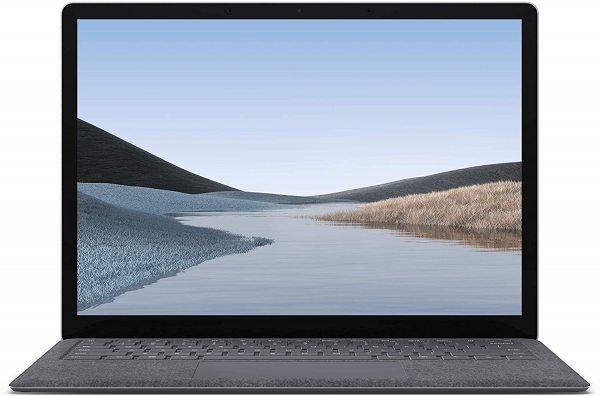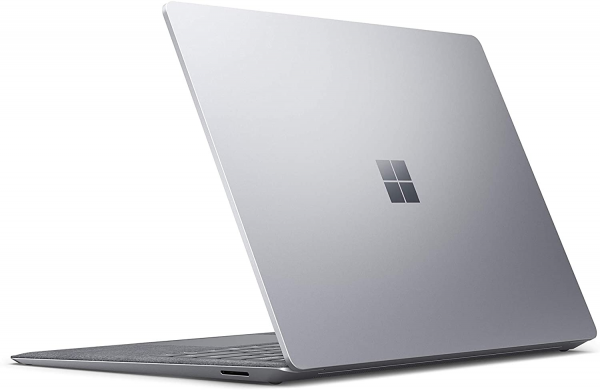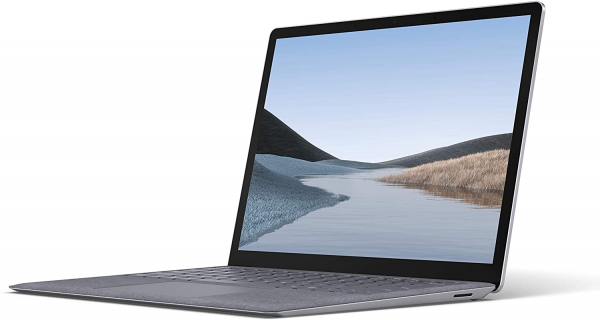Microsoft
Ultraportable Microsoft Surface Laptop 3: significant improvements, still room for improvement
Aprox. 977€
See specificationsAt the beginning of October, Microsoft presented the new products in its Surface range, including the Surface Laptop 3 marked by many evolutions. Will these be sufficient to propel the brand on the path of excellence?
Our review
Presentation
We have not checked, but we are convinced that if you take a dictionary and look for the definition of the word "sobriety", you will find a mention "refer to Surface Laptop 3". Joking aside, Microsoft's 13.5-inch ultrabook is indeed a model of restraint and wisdom (a little too much, some would say). And if this recipe already characterized the previous generation of Surface Laptop, Microsoft has added a few peppers.
The chassis has undergone some obvious modifications, but, above all, the product is now structured around a new core: a 10th generation Intel processor (Ice Lake) engraved in 10 nm. A chip that should bring greater energy efficiency, and enhanced graphics performance. And it will take at least that to counter a competition that has taken the same technological train (XPS 13 at Dell or Specter x360 at HP).

Screen
Barely a glance posed on this slab baptized "PixelSense", and we already knew with whom we were dealing: a beautiful luminosity, resplendent colors… And our measurements confirmed our first impression. With an average Delta E of 2.4 and a maximum brightness of 384 cd / m², the Surface Laptop 3 screen is at the top of the basket. The contrast value could be better ("only" 1329: 1), but we are staying in a good average. We are almost ashamed to dirty it with our big fingers, since as a bonus the tactile option is part of it. And on such a reduced format, the latter adds a touch of versatility in handling. This functionality has its counterpart, however: the slab is shiny, very shiny, and it would take more than a solid luminosity to compensate for unsightly reflections when used outdoors (average reflectance at 52%).
Two points also grieved us: first, the screen edges are far too present compared to current trends which are pushing for increasingly reduced bezels (screen occupancy rate: 79.07%). Then, the definition of 2 256 x 1 504 px (that is to say a 3: 2 format) offers a good display precision in office use, but it also too often imposes large black bands or distortions on more fun activities: watching a movie or video game. We would have preferred a choice more in line with current market standards. To finish with this chapter, note that the remanence is very marked: 37 ms. The argument remains however to moderate in our opinion, insofar as the couple CPU / iGPU will not really be cut for the experiments of nervous and fast games, as you will see it.

Performances
Let's face it, we expected a lot from the new Intel Ice Lake processors, which, supported by improved engraving finesse, were to usher in a new course in terms of energy efficiency. Unfortunately, the generational gains seemed very meager. Between our Surface Laptop 3 (i5-1035G7, 4 cores, 8 threads) and an HP EliteBook X360 830 G6 (i5-8365U, 4 cores, 8 threads also), there is barely 4% difference in favor of the product from Microsoft. Helped by a higher operating frequency of around 200 MHz, the HP Pavilion Laptop 13 (i7-1065G7, 4 cores, 8 threads) stands out logically (by 13%), but we can easily imagine that facing an i7 Whiskey Lake (9th Gen ), the generational gap would be just as reduced.
As it stands, it's hard to get a simple explanation out of your hat. Admittedly, since Intel has applied the same core configurations to its Core i5 and i7 low consumption to differentiate them only by cache and frequency adjustments, the boundaries between the ranges are more difficult to define. But that obviously does not explain everything. We will see later if the new architecture is more clearly based on consumption and, by extension, on available autonomy, but we can still note one thing: the working frequencies of Ice Lake chips seem dramatically low. In charge of encoding, our i5-1035G7 only found a stabilization point at 1,700 MHz. By way of comparison, the i5-8365U of the HP EliteBook x360 model tested by us climbed to 2300 MHz under the same conditions. In game, it's even worse: the CPU of the Surface Laptop 3 barely holds 1200 MHz. Consequently, one can imagine all the architectural improvements that one wants, such differences in frequencies remain difficult to compensate, what is more on a generation of chip.
Beyond this precise technical point, it cannot be denied that the Surface Laptop 3 offers good general performance, in view of the current ultrabook market. Office use is fluid and very pleasant, and this simple argument will probably be enough for many.
A quick word on the game part: there again, the Ice Lake generation should mark a turning point, and if the performance of the Surface Laptop 3 is rather a good surprise, these results should especially not be generalized. In fact, the graphics performance of the new Iris Plus iGPUs is largely dependent on the memory integration choices of each manufacturer. Microsoft has been generous with this, with two-channel LPDDR4-3700 memory. We discovered that on a less well-equipped laptop (HP Pavilion Laptop 13 with LPDDR4-2666 on a single channel), the frame rates obtained plunged into abysses of slowness. We have extensively detailed these aspects in a laboratory news. Regarding the Surface Laptop 3, remember this quote from the said article: "… the performance gains allow us to consider a correct gaming experience in 1080p on many modern games which until then remained out of reach: Skyrim and Fallout 4 are playable at 30- 40 fps with medium settings, just like Borderlands 2. Diablo 3 or Fortnite are very pleasant with a few graphic concessions, however, 3D titles that we will describe as recent and / or visually complex will still require a dedicated GPU. for example, will not go beyond 20 fps, even with very small graphics settings. "

Audio
Microsoft has particularly taken care of the audio part of its ultrabook this year. To be more precise, the speakers are undoubtedly the most qualitative that we have been able to test on this type of product. They have the particularity of diffusing the sound through the keyboard. Instinctively, one could imagine that the propagation would be parasitized, but on the contrary: the sound rendering does not show any sign of dynamic compression, whatever the volume applied. There is a good reserve of power, the equalization is balanced, the stereophony is good. Only a few distortions are to be expected if you type a text while listening to music (logical, for once). On the other hand, the Surface laptop 3 is an excellent backup solution for listening to music in peace.
As for the headphone jack (a 3.5 mm jack combo), it displays very honest characteristics. Some will see this as an advantage or a disadvantage, but it is important to note that the Surface Laptop 3 does not offer any software overlay in order to alter or improve the audio rendering. As far as we are concerned, we would have preferred to have a simple interface on hand that allow you to adjust some parameters on the fly, but given the basic sound quality offered, we will not take umbrage.
Mobility / Autonomy
We wondered if the latest Core Ice Lake would allow some gains in terms of autonomy or consumption: it is not. However, on these aspects, the CPU part is only one factor among others (display technology, battery capacity, etc.).
Still, with 8 h 22 min on our endurance test, the Surface Laptop 3 does little better than version 2, and especially much worse than the XPS 13 and Specter x360 of the previous generation. We note that we are also quite far from the 11 h 30 min advanced on the official page of the product. Despite this, the Surface Laptop 3 remains an easy-to-carry PC, helped in this by a reduced weight (1.28 kg for our test copy). The power supply unit will not represent an overload, and it has a USB connector which will allow the recharging of a device.
Conclusion
Obviously, Microsoft offers us a rather successful ultrabook, an object which, in addition to being elegant, has good computing power, some video game possibilities (even if they remain limited), and a beautiful ergonomics. That said, this Surface laptop 3 is nonetheless perfectible on certain points: the connection offer, in particular, deserves to be rethought; autonomy is disappointing; and what is the use of having a removable chassis if you cannot finally access any component. And these faults, not necessarily vital, are likely to cost Microsoft dear, when the game of comparisons with the competition comes, XPS13 or Specter x360 in mind.
Specifications

